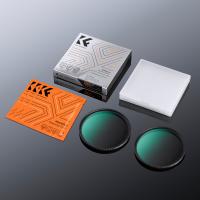What Do Viruses Look Like Under A Microscope ?
Viruses are microscopic infectious agents that cannot be seen with a light microscope. They are much smaller than bacteria and other microorganisms. Under an electron microscope, viruses appear as tiny particles with various shapes, such as spheres, rods, or complex structures. The outer surface of a virus, known as the viral envelope, may have spikes or other protrusions. The size and shape of viruses can vary greatly depending on the specific virus.
1、 Morphology and Structure of Viruses
Viruses are microscopic infectious agents that can only replicate inside the cells of living organisms. When observed under a microscope, viruses display a variety of shapes and structures, which are primarily determined by their genetic material and the presence of an outer protein coat called a capsid.
The morphology of viruses can be classified into several main categories. The most common shape is the icosahedral, which resembles a polyhedron with 20 triangular faces. Examples of viruses with this shape include the adenovirus and herpesvirus. Another common shape is the helical, where the viral genetic material is surrounded by a protein coat that forms a spiral structure. Tobacco mosaic virus is a well-known example of a helical virus.
Some viruses have more complex structures. For instance, the bacteriophage, which infects bacteria, has a head that is icosahedral in shape and a tail that is helical. Other viruses may have irregular shapes or even be filamentous.
Advancements in microscopy techniques have allowed scientists to gain a deeper understanding of virus structure. Cryo-electron microscopy (cryo-EM) has revolutionized the field by enabling the visualization of viruses at near-atomic resolution. This technique involves freezing the virus in a thin layer of ice and then imaging it using an electron microscope. Cryo-EM has revealed intricate details of viral structures, such as the arrangement of individual protein subunits in the capsid.
Furthermore, recent studies have shown that viruses can exhibit dynamic behavior and undergo structural changes during different stages of their life cycle. For example, some viruses can undergo conformational changes in their capsid to facilitate entry into host cells or to evade the immune system.
In conclusion, viruses display a diverse range of shapes and structures when observed under a microscope. Advances in microscopy techniques have allowed scientists to uncover intricate details of viral morphology, shedding light on their behavior and interactions with host cells.

2、 Viral Capsid and Envelope
Viruses are microscopic infectious agents that can only replicate inside the cells of living organisms. When observed under a microscope, viruses exhibit distinct structures known as the viral capsid and envelope.
The viral capsid is the protein coat that surrounds the genetic material of the virus. It is composed of repeating protein subunits called capsomeres, which come together to form a symmetrical structure. The shape of the capsid can vary greatly among different viruses, with common forms including helical, icosahedral, and complex shapes. For example, the influenza virus has a helical capsid, while the adenovirus has an icosahedral capsid.
Some viruses also possess an envelope, which is a lipid bilayer that surrounds the capsid. The envelope is derived from the host cell's membrane and contains viral proteins, including glycoproteins that protrude from the surface. These glycoproteins play a crucial role in viral attachment and entry into host cells. Not all viruses have an envelope, and those without one are called non-enveloped or naked viruses.
It is important to note that the latest advancements in microscopy techniques, such as cryo-electron microscopy, have allowed scientists to obtain high-resolution images of viruses. This has provided valuable insights into the detailed structure and organization of viral components. For instance, cryo-electron microscopy has revealed the intricate arrangement of capsomeres within the capsid and the specific interactions between viral proteins and host cell receptors.
In conclusion, viruses appear as tiny structures under a microscope, consisting of a viral capsid and, in some cases, an envelope. The capsid is composed of protein subunits and can have various shapes, while the envelope is a lipid bilayer derived from the host cell's membrane. Advancements in microscopy techniques have enhanced our understanding of virus structure and have contributed to the development of antiviral therapies.

3、 Viral Genome and Replication
Viruses are microscopic infectious agents that can only replicate inside the cells of living organisms. When observed under a microscope, viruses appear as tiny particles with various shapes and structures. The size of viruses typically ranges from 20 to 300 nanometers, making them much smaller than most cells.
The outer structure of a virus, known as the viral capsid, is composed of protein subunits called capsomeres. This capsid can have different shapes, such as helical, icosahedral, or complex. Some viruses also possess an outer envelope, which is derived from the host cell's membrane and contains viral proteins.
Within the capsid, the viral genome is located. The viral genome can be either DNA or RNA, and its size and organization vary among different viruses. Some viruses have a single-stranded genome, while others have a double-stranded one. Additionally, some viruses have a segmented genome, meaning it is divided into multiple pieces.
The replication process of viruses involves attaching to a host cell, entering it, and hijacking the cellular machinery to produce new viral particles. Once inside the host cell, the viral genome is released and replicated using the host cell's resources. The newly synthesized viral components then assemble to form new virus particles, which can go on to infect other cells.
It is important to note that recent advancements in microscopy techniques, such as cryo-electron microscopy, have allowed scientists to obtain high-resolution images of viruses. These techniques have provided valuable insights into the detailed structure and organization of viral components, aiding in the development of antiviral therapies and vaccines.

4、 Viral Proteins and Enzymes
Viruses are microscopic infectious agents that can only replicate inside the cells of living organisms. When observed under a microscope, viruses appear as tiny particles with a variety of shapes and structures. The exact appearance of viruses can vary greatly depending on the type of virus and the specific imaging techniques used.
Most viruses are much smaller than the cells they infect, typically ranging in size from 20 to 300 nanometers. They are composed of genetic material, either DNA or RNA, surrounded by a protein coat called a capsid. The capsid provides protection for the viral genetic material and also plays a role in attaching to host cells.
Some viruses have additional structures, such as an outer envelope derived from the host cell membrane. This envelope may contain viral proteins that help the virus attach to and enter host cells. These proteins, known as viral surface proteins, are often the target of the immune response and are crucial for the virus's ability to infect cells.
Recent advancements in microscopy techniques, such as cryo-electron microscopy, have allowed scientists to obtain high-resolution images of viruses. This has provided valuable insights into the detailed structure of viral proteins and enzymes. For example, cryo-electron microscopy has revealed the intricate architecture of spike proteins on the surface of coronaviruses, including the SARS-CoV-2 virus responsible for the COVID-19 pandemic.
In summary, viruses appear as tiny particles under a microscope, typically consisting of genetic material surrounded by a protein coat. Some viruses may also have an outer envelope derived from the host cell membrane. The detailed structure of viral proteins and enzymes can be visualized using advanced microscopy techniques, providing valuable information for understanding viral replication and developing antiviral therapies.






























There are no comments for this blog.